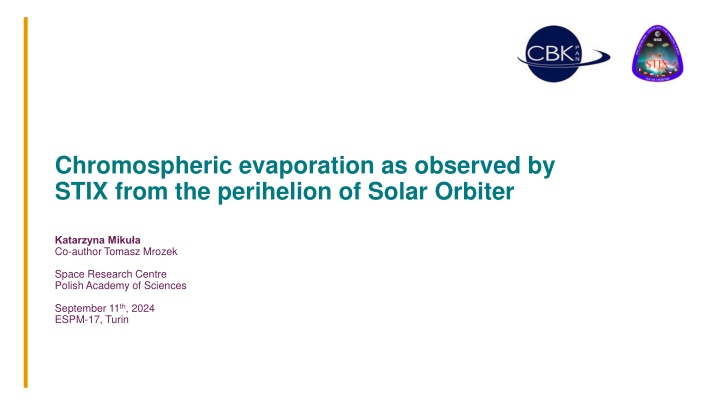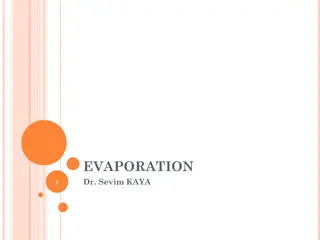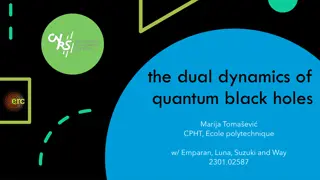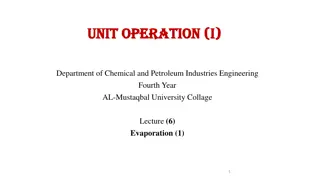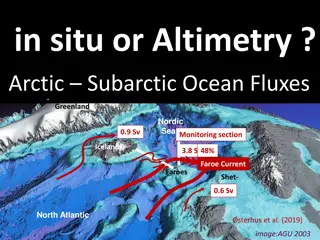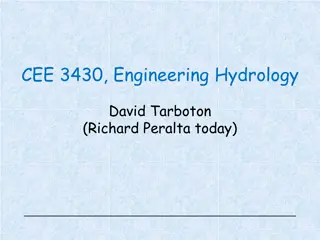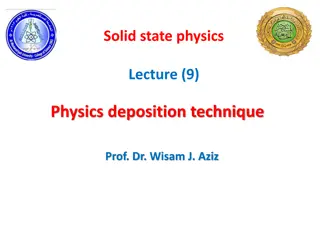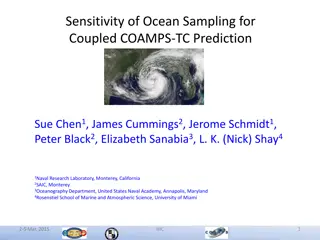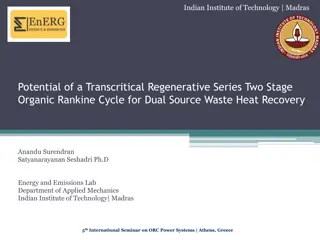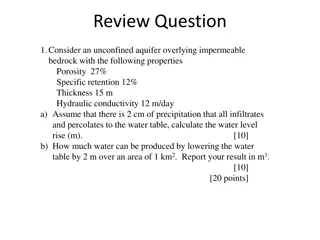Chromospheric Evaporation Observations with STIX
Observations of chromospheric evaporation using X-ray data and spectral lines, understanding the energy-altitude relation, and analyzing a solar flare event observed on March 28, 2022, with the STIX instrument on Solar Orbiter.
Download Presentation

Please find below an Image/Link to download the presentation.
The content on the website is provided AS IS for your information and personal use only. It may not be sold, licensed, or shared on other websites without obtaining consent from the author.If you encounter any issues during the download, it is possible that the publisher has removed the file from their server.
You are allowed to download the files provided on this website for personal or commercial use, subject to the condition that they are used lawfully. All files are the property of their respective owners.
The content on the website is provided AS IS for your information and personal use only. It may not be sold, licensed, or shared on other websites without obtaining consent from the author.
E N D
Presentation Transcript
Chromospheric evaporation as observed by STIX from the perihelion of Solar Orbiter Katarzyna Miku a Co-author Tomasz Mrozek Space Research Centre Polish Academy of Sciences September 11th, 2024 ESPM-17, Turin
Chromospheric evaporation Observations in X-rays: Author(s) Velocity Energy range Antonucci 1982 400 km s-1 SXR (SMM/XRP) Canfield et al. 1982 500 km s-1 SXR (SMM/BCS) Tomczak 1997 460 60 km s-1 590 95 km s-1 750 180 km s-1 SXR (Yohkoh/SXT) Mrozek & Tomczak 2004 130 720 km s-1 SXR (Yohkoh/SXT) Silva et al. 1997 60 km s-1 200 km s-1(projection effects) SXR (Yohkoh/BCS, SXT) HXR (Yohkoh/HXT) Liu et al. 2006 103 km s-1 HXR (RHESSI) Sui et al. 2006 340 km s-1 HXR (RHESSI) Mrozek et al. 2022 150 km s-1 HXR (RHESSI) We can study chromospheric evaporation from the spectral lines and from the images.
The energy-altitude relation The thick-target model Brown 1971 The theoretical relations between the altitude of HXR footpoint sources and energy of emitted radiation Brown and McClymont 1975 The relation depends on the column density (power-law) and the non-thermal electron beam spectral index Brown et al. 2002 Observations of the relation e.g. Matsushita et al. 1992, Aschwanden et al. 2002, Mrozek 2006 Density structure within the flaring loop e.g. Fletcher 1996, Aschwanden et al. 2002, Mrozek et al. 2022 Physical conditions of the flare plasma (RHESSI observations) e.g. Kontar et al. 2008, 2010, Battaglia & Kontar 2011, Jeffrey et al. 2015, 2020 The E-A relation allows to measure the density in a collision region non-thermal electrons are the tool probing the density very precisely. Aschwanden et al. 2002
M4.2 solar flare observed on March 28th, 2022 STIX Spectrometer Telescope for Imaging X-rays onboard Solar Orbiter STIX s high angular resolution and gradual approach to the Sun offer a great opportunity to observe footpoints with more details and investigate evolution of the E-A relation. The present understanding of the instrument allows for reconstructing images with an angular resolution better than 15 arcsec. But for distance 0.3253 AU 1 arcsec = 236.6 km The present spatial resolution of STIX is better than 3000 km (for centroid location accuracy is around 300 km). Yohkoh/HXT: 5 arcsec resolution (~3500 km), but low energy resolution (four channels 14-23 keV, 23-33 keV, 33-53 keV, 53-94 keV) M4.2 GOES class Solar Orbiter distance to the Sun: 0.3253 AU Detailed analysis of the event: Purkhart, S. et al. 2023, A&A 679, id.A99 RHESSI: in practice angular resolution barely was better than 9 arcsec (~6500 km)
Study of the impuls as a whole Image reconstructions MARLIN algorithm (cross-checked with MEM_GE and EM) Height above photosphere Mrozek & Kowalczuk 2010 Density estimation Aschwanden et al. 2002 STIX images were reconstructed for the time interval of 11:21:16 to 11:22:16 UT. Strong deviation (bump) from power-law around 40 keV
The impulse in time intervals Images reconstructed for several, 10 s long, time intervals. Bump formed shortly after the peak maximum. Velocity dichotomy: ~80 km s-1 for sources below 20 keV (hot thermal front), > 2500 km above photosphere. ~200 km s-1 for higher energies above 25 keV (total plasma density front probed by non-thermal electrons), <2500 km above photosphere. Top: time evolution of HXR sources positions in the southern footpoint for several energy ranges. Bottom: electron power-law index.
The density-altitude relation Aschwanden et al. (2002) derived density from an E-A relation assuming power-law shape. The presence of the bump prevents such approach, so we derived it from simple relation (Brown et al. 2002): ( ?220 ???)2 ( ?11000 ??) ( ?120 ???)2 ?21000 ??) ?? 1012?? 3 ( Strong assumtion: density is a main parameter defining the shape of an E-A relation. We neglect electron index evolution and other mechanisms (like magnetic mirroring, albedo etc.).
The density-altitude relation An example of density evolution in the flare model with electron beam as main energy transport (Nagai & Emslie, 1984).
Summary The quality of present HXR data gives strong new constraints for understanding the energy deposition by non-thermal electrons. Total density detailed evolution within footpoints is now possible treating non- thermal electrons as a tool. Data analysis will be improving in a near future - detailed modeling of the relation (more accurate centroids positions with nominal STIX resolution of 7 arcsec, spectral dependence and other secondary effects included like magnetic mirroring, electron pitch-angle, albedo) More statistical analysis is in progress. A bump is visible in 41% of HXR bursts that we analysed (>100 events) based on STIX observations.
